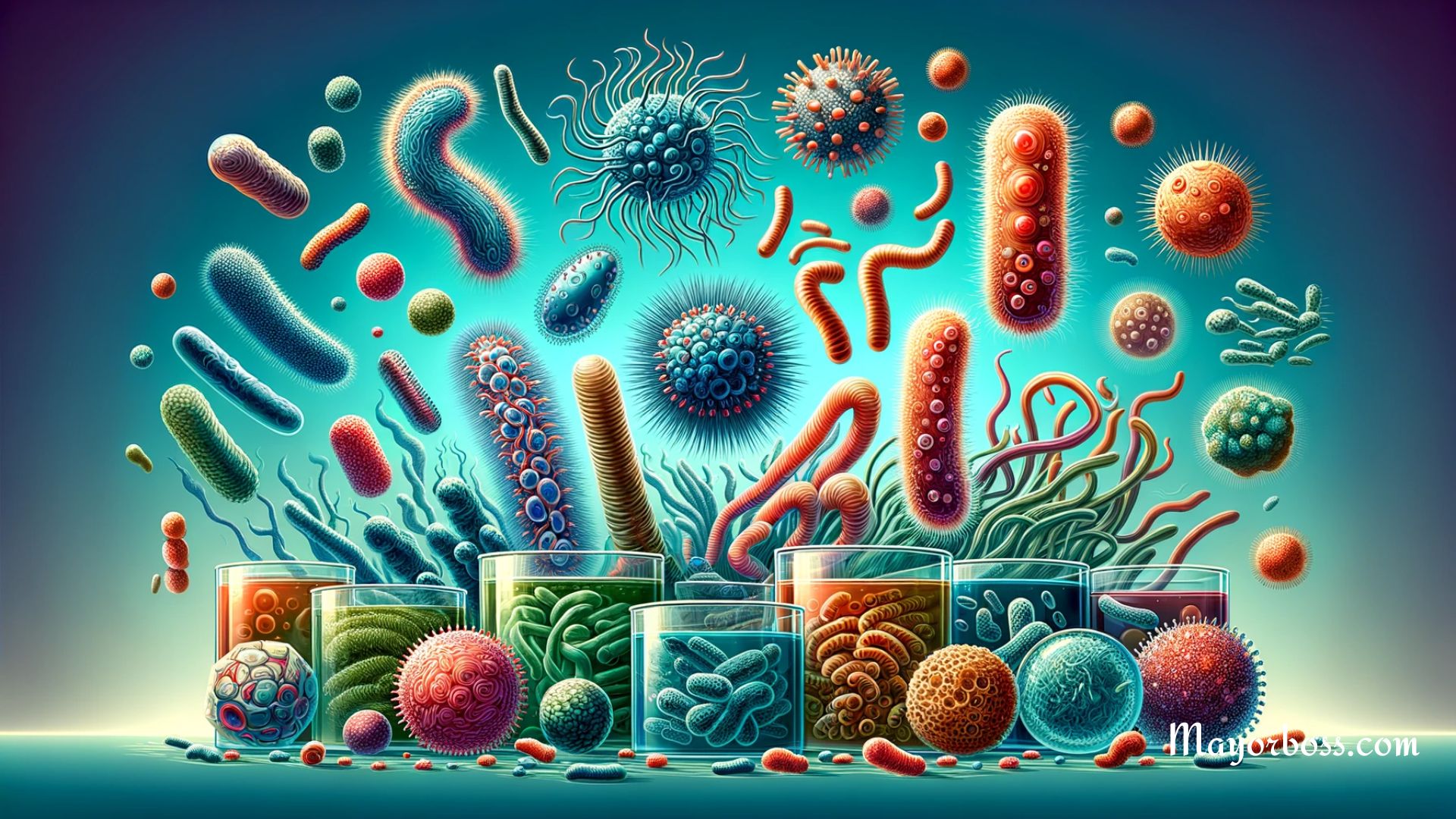What Are Germs?
What Are Germs?
Germs are tiny microscopic organisms that are not visible to the naked eye, and they can be found everywhere – in the air, soil, and water. There are four major types of germs: bacteria, viruses, fungi, and protozoa. These microorganisms play different roles in the environment and in our bodies; some are helpful, while others can cause diseases.

Bacteria
Bacteria are single-celled organisms that are incredibly diverse. They can live in a wide range of environments, from the extreme heat of geysers to the icy cold of Antarctica. In your body, a lot of bacteria are beneficial and are crucial for processes like digesting food. However, some bacteria can cause infections such as strep throat, cavities, pneumonia, ear infections, strep throat, sexually transmitted infections (STIs), or urinary tract infections. But don’t worry. Antibiotics are used to treat bacterial infections.
Viruses
Viruses are even tinier than bacteria and require living hosts — like people, plants, or animals — to multiply. Otherwise, they can’t survive. When they enter your body, they can hijack your cells and turn them into virus factories, leading to diseases like the flu or the common cold, COVID-19, and HIV.
Fungi
Fungi are more complex organisms that can be single-celled or multicellular. They can be found in the air, on plants, in the soil, and in water. Some fungi are beneficial to humans, such as those used in baking bread and brewing beer. Conversely, some fungi can cause skin diseases, such as athlete’s foot or ringworm.
Protozoa
Protozoa are single-celled organisms that have more complex internal structures than bacteria. They typically thrive in moist environments, including bodies of water or even in humans and animals. Some protozoa are parasites, which means they need to live on or in a host to survive. They can cause diseases like malaria, toxoplasmosis, or giardia.
To keep yourself safe from harmful germs, washing your hands regularly and maintaining good hygiene is crucial. When you’re not feeling well, seeing a doctor can help determine if germs are the cause and what treatment might be best for you. Science continues to study these microscopic creatures to understand them better and find ways to protect people from the diseases they can cause.






